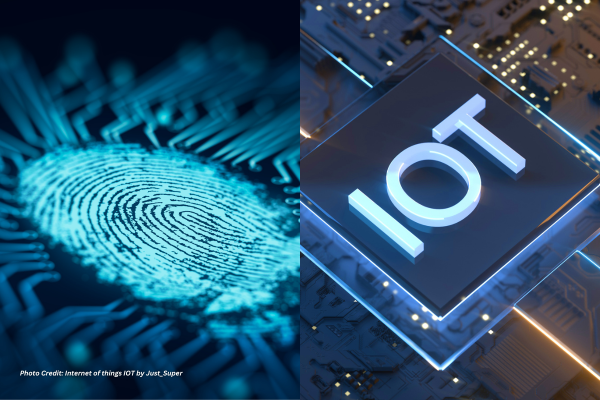The cybersecurity environment in Australia is experiencing a transformation, with innovative technologies at the forefront. These developments are crucial to strengthening the nation’s cyber resilience and protecting sensitive data. Expert perspectives back up this narrative as it delves into the impact of these technologies on Australian cybersecurity.
1. Artificial intelligence (AI) and machine learning (ML)
Artificial Intelligence (AI) and Machine Learning (ML) are driving significant advancements in the Australian cybersecurity sector. According to Andrew St. Clair’s LinkedIn article, AI and ML algorithms can analyse large datasets, allowing for the rapid discovery of unusual patterns and possible cyber risks. This analytical prowess enables Australian organisations to considerably strengthen their cyberdefenses. AI and machine learning developments translate into a pragmatic response to a changing threat situation.
Australian organisations can strategically improve their cybersecurity measures by leveraging the data analytic capabilities of these technologies, thereby strengthening their resistance against cyber attacks and weaknesses. This data-driven strategy is consistent with the best practices needed to handle the complicated and ever-changing digital security landscape.
The use of AI and machine learning in cybersecurity illustrates the country’s proactive approach to safeguarding sensitive data and networks. Organisations can successfully minimise risks, preserve sensitive information, and maintain the integrity of their digital infrastructure by employing these technologies in a period typified by rising frequency and sophistication of cyberattacks.
2. IoT security
The rapid growth of Internet of Things (IoT) devices has created a landscape of both opportunities and hazards. The strategic initiatives of Standards Australia highlight the critical need for comprehensive IoT network security. Adoption of developing solutions specialised for IoT security is said to be critical to ensuring the integrity of Australia’s digital infrastructure. This strategic focus coincides with the growing technological landscape, in which IoT devices play an increasingly important role across several industries.
Investments in new technologies aimed at IoT security, according to Standards Australia instructions, represent a proactive strategy to mitigate possible weaknesses and guard against cyber attacks. The dedication of Australian organisations to improving IoT security demonstrates a diligent attitude towards securing key digital assets. By investing in these developing technologies, they ensure the resilience of their digital infrastructure in the face of changing cyber threats and vulnerabilities. This strategic decision reflects the country’s commitment to maintaining cybersecurity standards in the face of IoT expansion.
3. Blockchain technology
Blockchain technology has the potential to significantly improve cybersecurity in Australia. Andrew St. Clair emphasises the importance of this in his LinkedIn insights. The technology’s inherent decentralisation and immutable ledger properties make it an excellent alternative for protecting sensitive data.
To strengthen their defences against data breaches, Australian businesses are gradually incorporating blockchain into their security policies. This strategic acceptance of blockchain technology underscores the technology’s rapid use in Australia, emphasising the country’s proactive actions to combat cyber risks and ensure data integrity.
4. Quantum computing
Within the field of Australian cybersecurity, quantum computing appears as both a threat and an opportunity. It has the ability to undermine present encryption methods while also providing the opportunity for powerful encryption solutions. According to Technology Decisions, preparation to combat quantum attacks is critical, and deliberate investments in quantum-resistant technology are required to maintain the integrity of cybersecurity measures.
Australia’s recognition of the dual aspects of quantum computing demonstrates the country’s commitment to maintaining a strong cybersecurity posture. The need for quantum-resistant systems demonstrates a proactive approach to reducing possible vulnerabilities in the face of this game-changing technology.
5. Biometrics and multi-factor authentication
Biometrics and Multi-Factor Authentication (MFA) are becoming increasingly common in the Australian cybersecurity scene. These technologies act as powerful security layers, limiting authorised persons’ access to critical systems and data. As a result, the use of biometrics and MFA in Australian cybersecurity adds greatly to risk reduction, breach prevention, and data theft prevention.
Incorporating such security measures is in line with industry trends and reflects the country’s commitment to strengthening its cybersecurity posture. Organisations eliminate possible risks and strengthen data protection processes by ensuring that only authorised personnel have access to essential systems. This trend highlights Australia’s proactive cybersecurity strategy, which aligns with worldwide best practises in managing the ever-present threat of unauthorised access and data breaches.
6. Cloud security solutions
In response to the increased usage of cloud services, Australian organisations are increasing their attention to cloud security. BearingPoint, a well-known source in this field, emphasises the need for cloud security solutions. Cloud Access Security Brokers (CASBs) and cloud-native security solutions, in particular, have emerged as critical components for protecting data held in cloud settings. These solutions emphasize the importance of addressing the unique security problems faced by cloud services, according to BearingPoint’s findings..
In an increasingly cloud-centric corporate world, the use of CASBs and cloud-native security technologies fits with the necessity to safeguard sensitive data, ensure data integrity, and satisfy regulatory requirements.
This strategic move towards cloud security solutions demonstrates Australia’s commitment to combating increasing digital threats in the cloud realm. These solutions attempt to reduce possible risks and ensure the confidentiality and integrity of data stored in the cloud, which organisations want to implement in order to strengthen their cybersecurity posture.
The influence of developing technologies on Australia’s cybersecurity landscape is substantial and critical. Artificial intelligence (AI) and machine learning (ML), blockchain technology, quantum computing, biometrics, and multi-factor authentication (MFA) are examples of notable advancements. These tools, when combined, enable organisations to confront growing cyber threats more proactively. Andrew St. Clair reported that Australian organisations are empowered by AI and ML algorithms to effectively detect unusual patterns and potential threats, enhancing their cyber defence mechanisms.
Furthermore, the adoption of blockchain technology has become integral, offering decentralisation and immutable ledger capabilities that secure sensitive information against breaches. This coordinated use of new technology demonstrates the country’s commitment to strengthening cyber resilience. Australian enterprises, both public and private, ensure their capacity to traverse the ever-changing digital threat landscape and eventually protect essential data and systems by investing proactively in these breakthroughs.
Justin Lavadia is a content producer and editor at Public Spectrum with a diverse writing background spanning various niches and formats. With a wealth of experience, he brings clarity and concise communication to digital content. His expertise lies in crafting engaging content and delivering impactful narratives that resonate with readers.























































